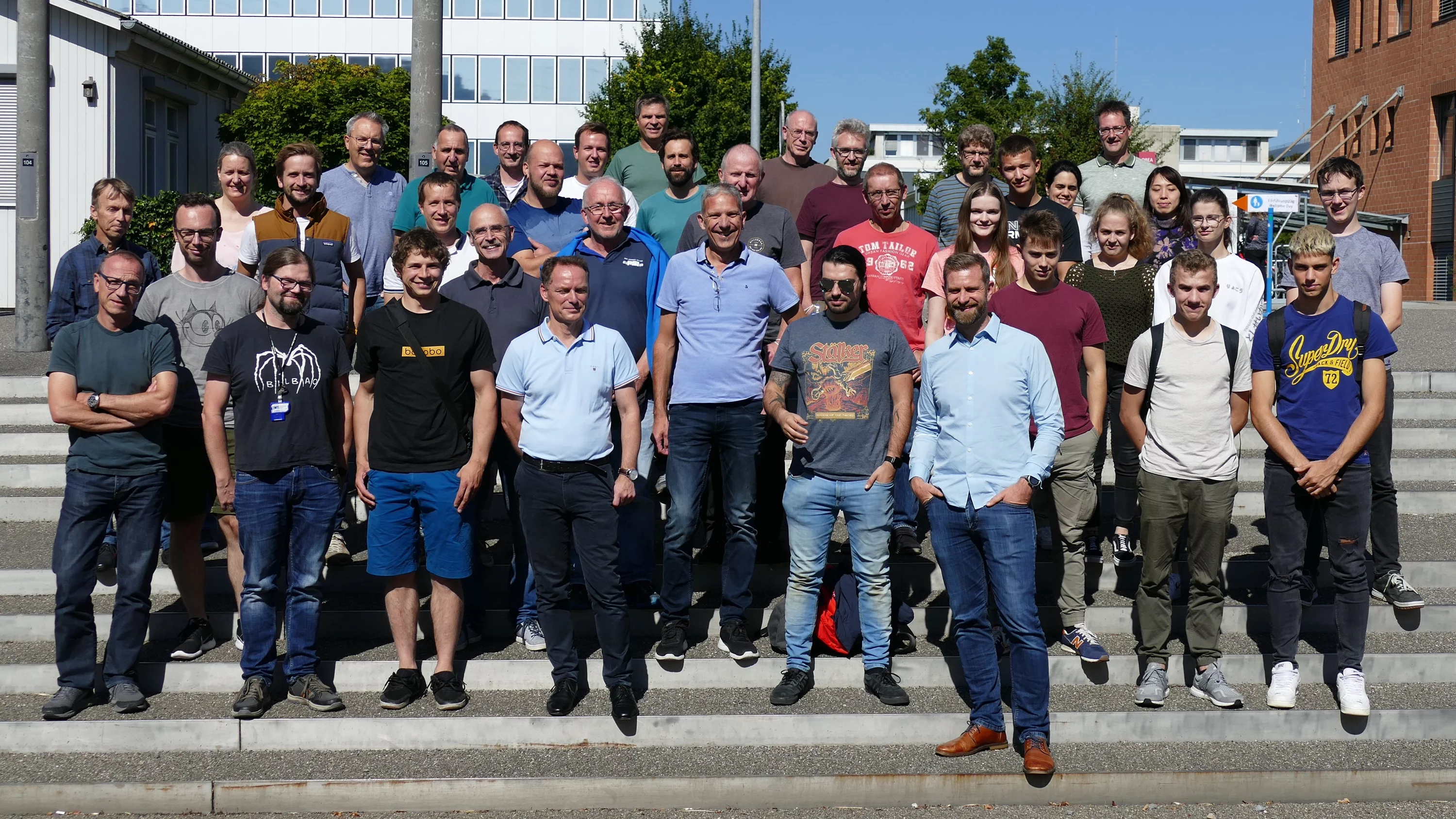
Our core mission is to provide technical and scientific support for state-of-the-art experiments carried out using particle beams produced by the SINQ and UCN neutron sources as well as the SμS muon source at PSI.
Notably, for material science and solid state physics experiments that use neutron beams, we provide cradle-to-grave service. We operate the Swiss Neutron Spallation Source SINQ that generates beams of cold and thermal neutrons. In order to transport these neutron beams to the individual experimental beamlines, we develop, build, simulate and install neutron optics. In close collaboration with the Laboratory for Neutron Scattering and Imaging, we design, build and operate the neutron scattering and imaging instruments available to the international scientific user community. We also enable users to study materials in extremes of high and low temperatures, high pressure and high magnetic fields by developing and maintaining sample environment optimized for neutrons. Finally, we develop the control and analysis software required for successful neutron experiments.
Our Laboratory also has close connections to other Laboratories in CNM; for example, with the Laboratory for Muon Spin Spectroscopy (LMU) for which we provide support for sample environment, instrumentation and control software. Similarly, we have established collaborations with the Laboratory for Particle Physics (LTP); the LIN spallation source operations group operate a world-leading ultra-cold neutron (UCN) source that allows for particle physics experiments carried out by LTP. We also have close collaborations on detectors, were our neutron scattering operations benefit from the expertise on detector electronics at LTP.
Apart from these operational tasks, LIN is using its expertise to leadi and contribute to several large-scale projects within CNM and PSI. A highlight is the SINQ Upgrade project that was completed in June 2021 and included the modernisation of all seven neutron guides at SINQ, resulting in substantial flux increases. We are also currently working on upgrades of several instruments at SINQ. In addition, we are contributing to instrumentation at the European Spallation Source within the PSI-ESS project.
Finally, LIN also contributes to educating the future work force required to develop and operate research facilities at PSI and elsewhere. Notably, in close collaboration with the occupational training at PSI (Berufsbildung) we run an apprenticeship program to train physics laboratory assistants.
Our mission is carried out by six staff groups. In addition, to performing the mission above, members of our laboratory also carry out their own research to develop new methods and techniques to improve the facilities we operate. Last but not least, LIN researchers also take advantage of our unique facilities to study quantum materials in close association with the University of Zurich via the jointly funded Correlated Quantum Matter Group.
LIN also operates the Beamline BOA at SINQ.
Beamline BOA at SINQ
The operation of the new multi-purpose neutron beamline BOA (Beamline for neutron Optics and other Approaches) has started successfully in May 2011.This new beamline is a redesign of the former FUNSPIN beamline. BOA is an 18 m long instrument located at the beam channel 51 looking on the SINQ cold source. The primary polarization element (polarizing bender) of the former design was kept because research with polarized neutrons is of key interest in the neutron scattering community.

